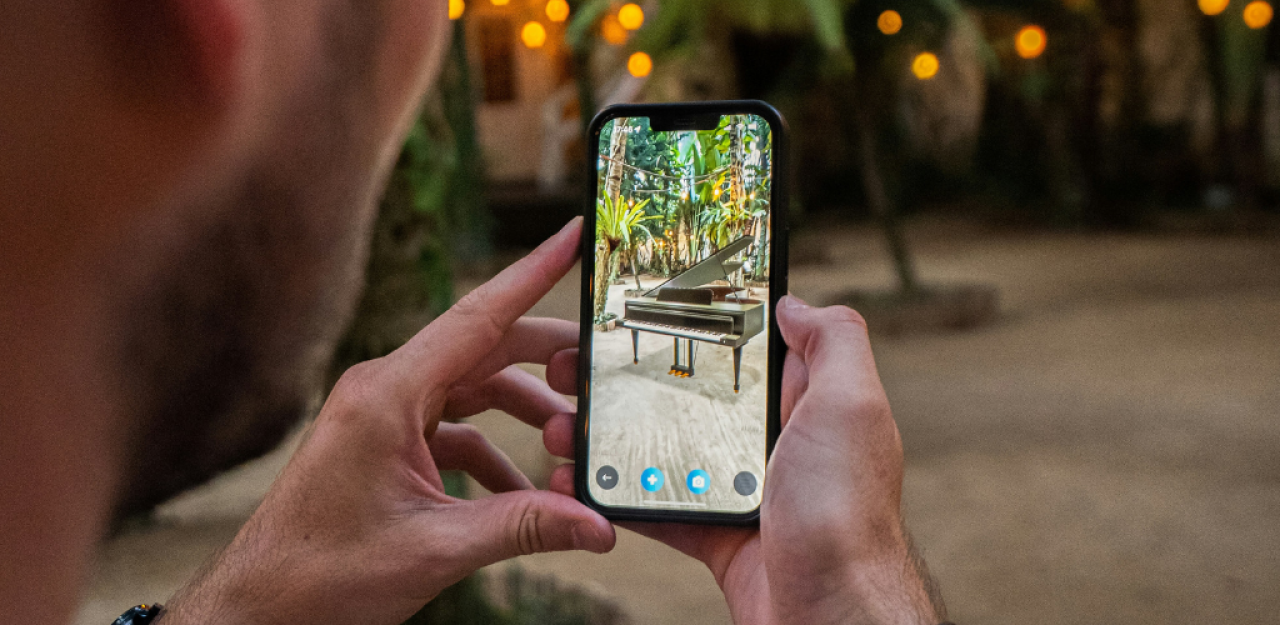
Augmented Reality (AR) in Design: How Interactive Experiences Are Redefining Brand Engagement
12 Nov 2024In today’s fast-paced digital era, brands are constantly seeking innovative ways to connect with their audiences on a deeper, more memorable level. One of the most exciting developments in the world of branding and marketing is the use of Augmented Reality (AR). By blending real-world and digital elements, AR offers a unique way to create interactive experiences that go beyond traditional advertising, allowing brands to engage their customers in meaningful, immersive ways.
What is Augmented Reality (AR)?
Augmented Reality (AR) is a technology that overlays digital information, such as images, sounds, or other data, onto the real world. Unlike Virtual Reality (VR), which creates a fully immersive virtual environment, AR enhances what we see around us by adding interactive elements. Through a smartphone, tablet, or AR-enabled device, users can see digital elements superimposed onto their real-world surroundings.
For brands, AR offers an unparalleled opportunity to create immersive, interactive experiences that captivate audiences and keep them engaged. With AR, brands can bring their products to life, tell stories in new ways, and offer customers the ability to interact with their content on a personal level.
How AR is Redefining Brand Engagement
-
Enhanced Product Visualization
One of the most practical applications of AR in brand engagement is product visualization. Brands, especially those in retail and e-commerce, use AR to allow customers to visualize products in their own spaces before making a purchase. For instance, a furniture brand can use AR to let customers “place” a virtual couch in their living room to see how it fits. This interactive experience helps customers make more informed decisions and reduces the risk of post-purchase dissatisfaction.
-
Interactive Storytelling
AR also opens up new possibilities for storytelling, giving brands a way to narrate their journey or values in a more dynamic way. Instead of reading about a brand’s story, customers can experience it through interactive elements. For example, a cosmetics brand might use AR to show how ingredients are sourced or how products are developed, allowing customers to feel more connected to the brand’s values and processes.
-
Gamified Experiences
Brands are increasingly using AR to create gamified experiences that reward customer engagement. From AR scavenger hunts to loyalty programs that involve AR-based mini-games, brands are exploring ways to make customer interactions fun and rewarding. For example, a brand could create an AR treasure hunt within a store, where customers can unlock discounts or prizes by finding virtual items.
-
Virtual Try-Ons
For beauty, fashion, and accessory brands, AR is a game-changer when it comes to virtual try-ons. Customers can use their smartphones to see how a particular shade of lipstick, pair of glasses, or even a new hairstyle might look on them. This not only enhances convenience but also increases the likelihood of purchase, as customers can make choices based on how products truly look on them.
-
Enhanced Packaging
Some brands are using AR to enhance packaging, creating an experience that goes beyond the product itself. By scanning a package, customers can access additional content, such as product information, tutorials, or brand stories. This makes the packaging interactive and informative, providing customers with added value and keeping the brand top-of-mind even after purchase.
The Benefits of AR in Brand Engagement
Using AR in brand engagement offers several benefits, including:
-
Increased Customer Engagement: AR experiences are highly interactive, making them more engaging than static advertisements.
-
Improved Brand Recall: Interactive experiences leave a lasting impression, helping customers remember the brand.
-
Enhanced Customer Loyalty: By offering unique experiences, brands can foster a stronger emotional connection with their customers.
-
Informed Purchase Decisions: AR helps customers visualize and interact with products, reducing the likelihood of returns or dissatisfaction.
Challenges and Considerations
While AR offers exciting possibilities, it’s essential for brands to approach this technology strategically. AR experiences should be user-friendly, well-designed, and relevant to the brand. Investing in high-quality AR development and ensuring compatibility across devices are critical steps to creating a successful AR experience. Additionally, brands must consider privacy and data security, as AR applications often require access to user data and device cameras.
The Future of AR in Design
As AR technology continues to evolve, its applications in brand engagement will only expand. Future developments in AR could include more seamless integrations with wearable devices, hyper-realistic virtual elements, and even personalized AR experiences tailored to individual users. For brands willing to invest in AR, the potential to redefine engagement, loyalty, and customer satisfaction is vast.









